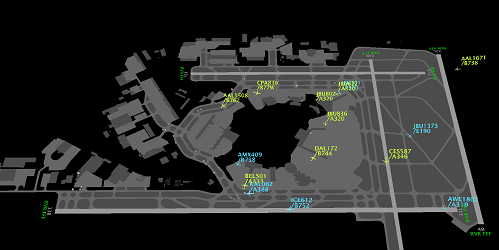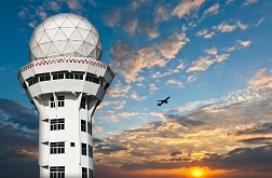New Technology Makes Air Traffic More Convenient, Predictable, and Environmentally Friendly
 Weather is a common culprit of delayed flights, but so is runway congestion. Airplanes have to circle airports waiting for the go-ahead to land. Air traffic managers have to consult many sources of information provided by several different systems to manage traffic movements. The Federal Aviation Administration’s (FAA) System Wide Information Management (SWIM) is changing all of that.
Weather is a common culprit of delayed flights, but so is runway congestion. Airplanes have to circle airports waiting for the go-ahead to land. Air traffic managers have to consult many sources of information provided by several different systems to manage traffic movements. The Federal Aviation Administration’s (FAA) System Wide Information Management (SWIM) is changing all of that.
SWIM is the enabling component of the Next Generation Air Transportation System, commonly known as NextGen, that gets the right information to the right systems at the right time. That information within the context of NextGen helps air traffic operations, air carriers, air cargo, airport managers, and others improve operational efficiency and reduce travel delays.
Before SWIM, pilots, air traffic managers, and airlines had to query multiple systems to receive National Airspace System information, often requiring a lot of back and forth communication. Airlines and traffic managers can now use SWIM to get that information more efficiently. Access is provided to authorized airspace users like commercial airlines, air traffic managers, researchers, and other governmental agencies. They can pick what information they want to receive and when they want to receive it.
If a storm is affecting New York and is expected to hit New England, a SWIM user in Massachusetts might see information about the weather in New York that will eventually affect New England. This information will help them mitigate delays in arrivals, departures, and runway and tarmac congestion. SWIM will allow for stable performance, reduced delays, and situational awareness; this saves time and money because it allows airspace users and the FAA to make collaborative, real-time decisions.
What Are the Benefits of SWIM?
For the public, NextGen with the help of the SWIM information infrastructure will help improve traffic flow, save time, and reduce emissions. For the FAA, SWIM saves money and effort. Databases developed using SWIM, like the Integrated Terminal Weather System (ITWS), are cheaper and faster to develop. The ITWS team built the database in half the expected time and saved 19 percent in the cost to develop and in the number of lines of code.
SWIM is all about making important information easily accessible. Tony Colon, Volpe’s SWIM/ITWS project manager, said, “SWIM will take data from these multiple silos of information that we have and incorporate them all so everyone in industry and in government can have access to the data that was once unobtainable.”
Volpe experts involved in development of the SWIM Terminal Data Distribution System (STDDS) received special recognition for their work in September. STDDS is being deployed at 39 Terminal Radar Approach facilities around the country.

